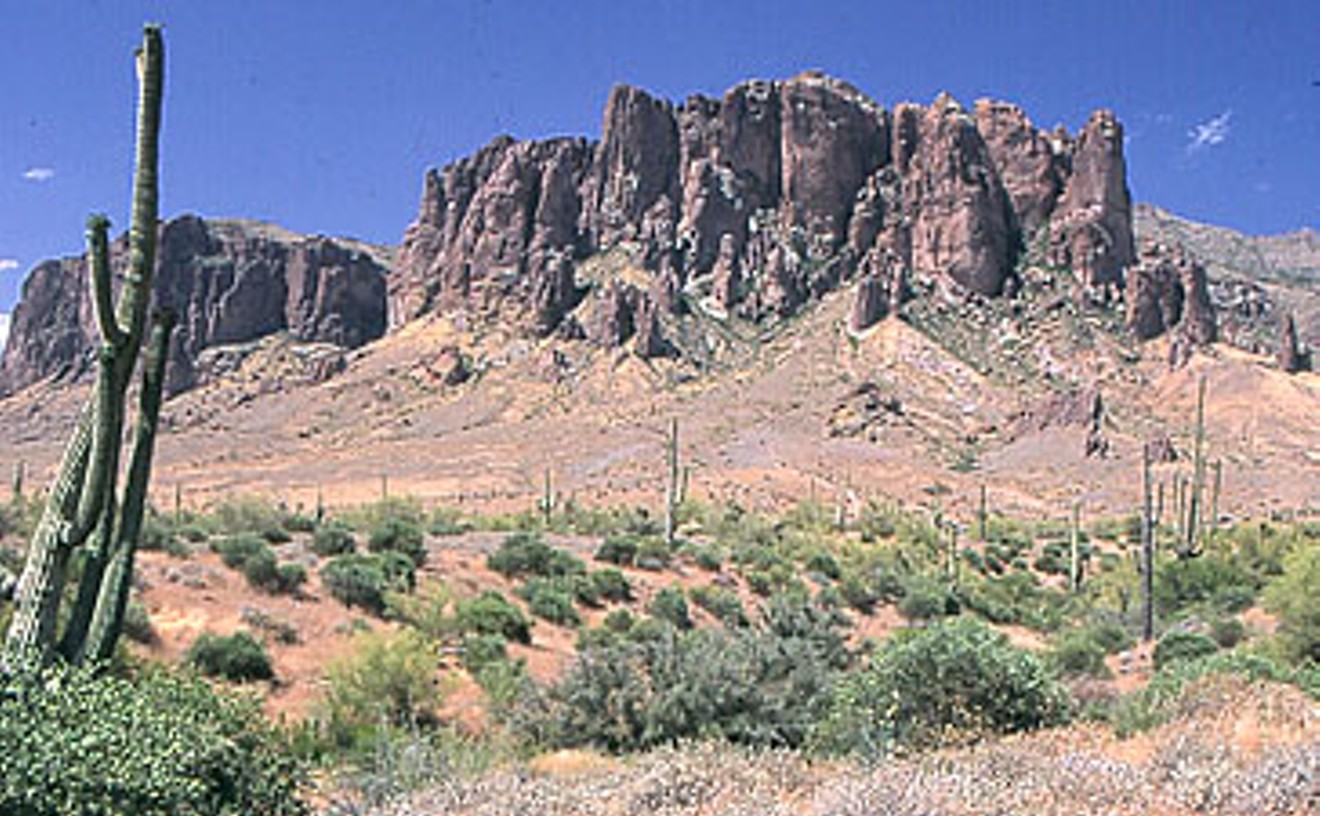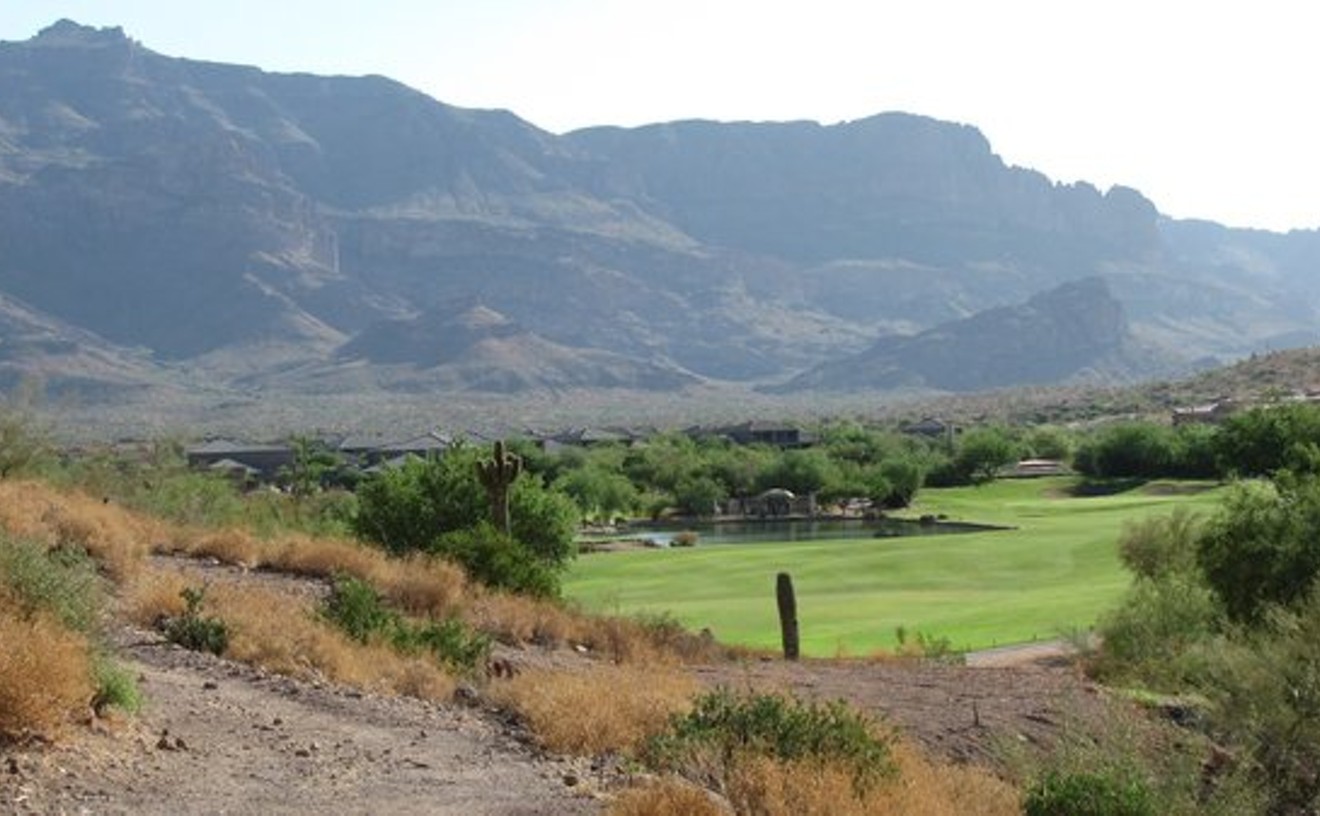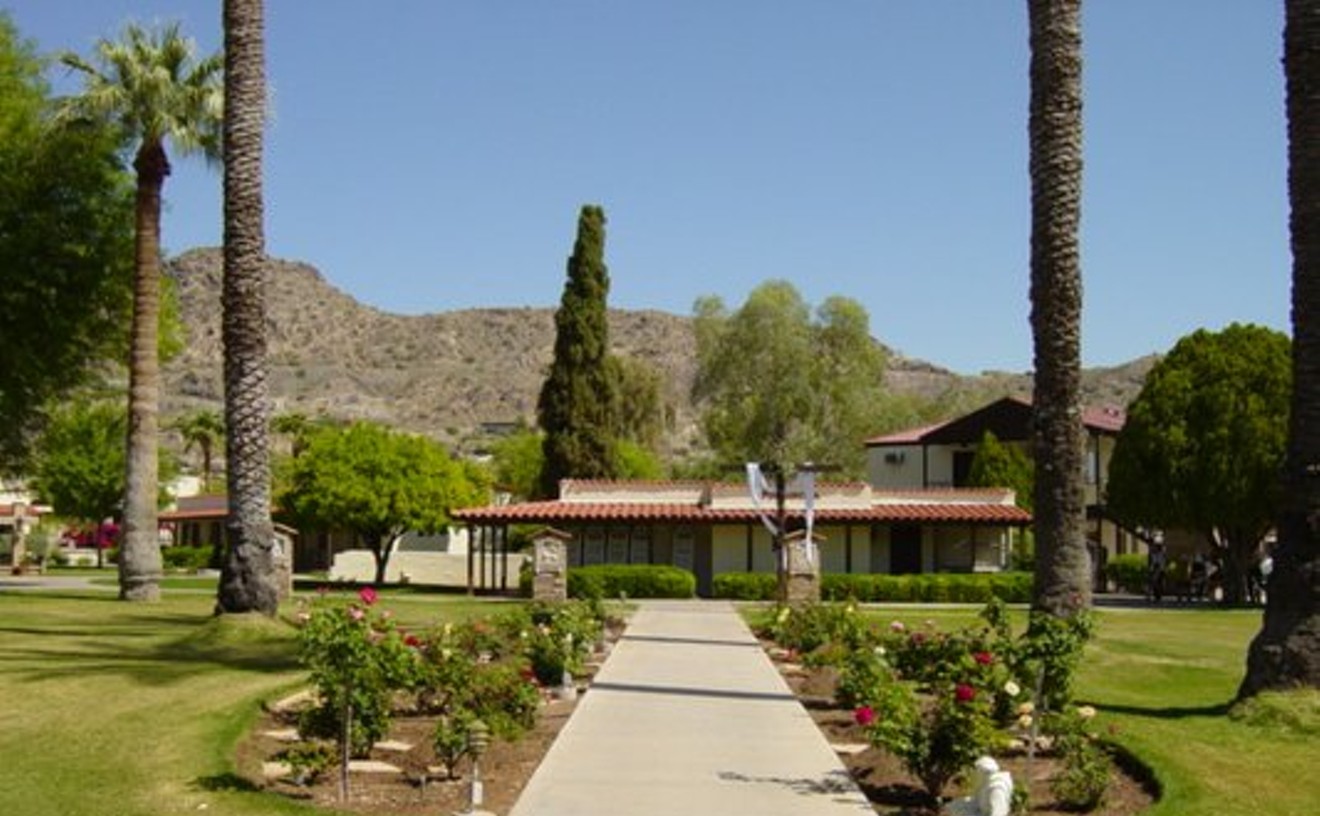As a rule, we snicker at anything resembling a religious experience -- particularly one that's being used as the center of a friend's birthday celebration. But when another guest insisted, "Oh, be a good sport," we rolled our eyes and went to the unusual fete -- at a labyrinth located behind the Franciscan Renewal Center.
It wasn't so bad. Peaceful, actually. Not that walking a labyrinth will change your life -- at least not in our book. Still, we did find it invigorating, in spite of our cynical selves. The act of walking a labyrinth is an ancient one, practiced by people for centuries. It is not a maze; there is no way to get lost. The journey of twists and turns through the labyrinth is thought to represent the journey through life. Some people say they find their god; others believe the act can heal.
This particular labyrinth, located in a quiet patch of desert at the foot of Mummy Mountain, is constructed of river rocks; it is roughly the size of a small residential swimming pool. Each of the nine guests in our party took turns slowly walking between the rocks, winding around and around and ending up in the middle, where folks have left trinkets and notes scrawled on scraps of paper and business cards, à la Jerusalem's Wailing Wall. Then back again.
Maybe it was the beautiful, almost-spring day, maybe the company, maybe the labyrinth itself, but we felt happy and peaceful upon completing our short journey, which lasted no more than five minutes, round-trip. We didn't snicker once.
Around the outside of the labyrinth, people have used rocks to leave their own messages: "Love" -- "Peace" -- "Why not?"
Why not, indeed.








